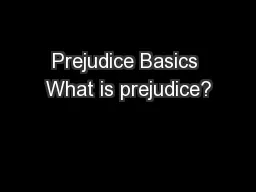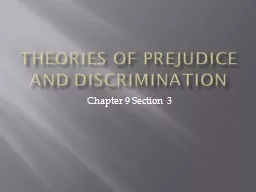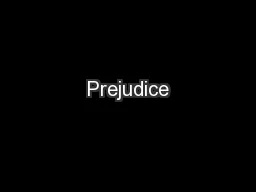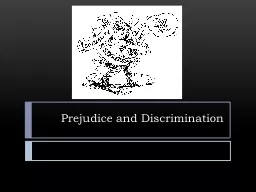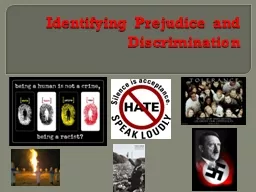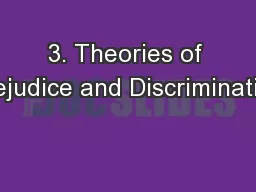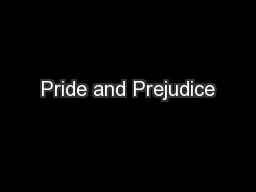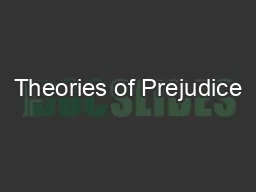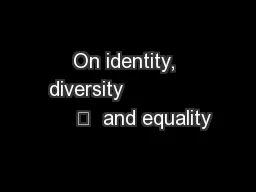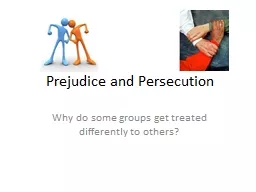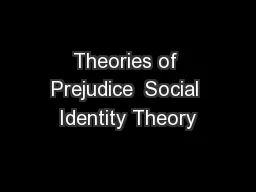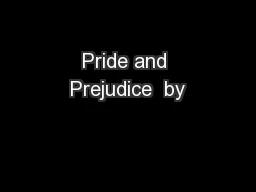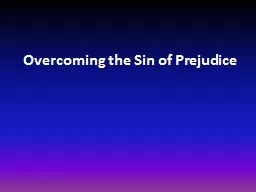PPT-Prejudice Basics What is prejudice?
Author : aaron | Published Date : 2018-10-23
Prej vs stereotypes vs discrimination Does it have to be negative Does it have to be held by high status group Is it implicit or explicit or both IAT Blatant vs
Presentation Embed Code
Download Presentation
Download Presentation The PPT/PDF document "Prejudice Basics What is prejudice?" is the property of its rightful owner. Permission is granted to download and print the materials on this website for personal, non-commercial use only, and to display it on your personal computer provided you do not modify the materials and that you retain all copyright notices contained in the materials. By downloading content from our website, you accept the terms of this agreement.
Prejudice Basics What is prejudice?: Transcript
Download Rules Of Document
"Prejudice Basics What is prejudice?"The content belongs to its owner. You may download and print it for personal use, without modification, and keep all copyright notices. By downloading, you agree to these terms.
Related Documents

